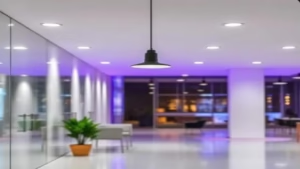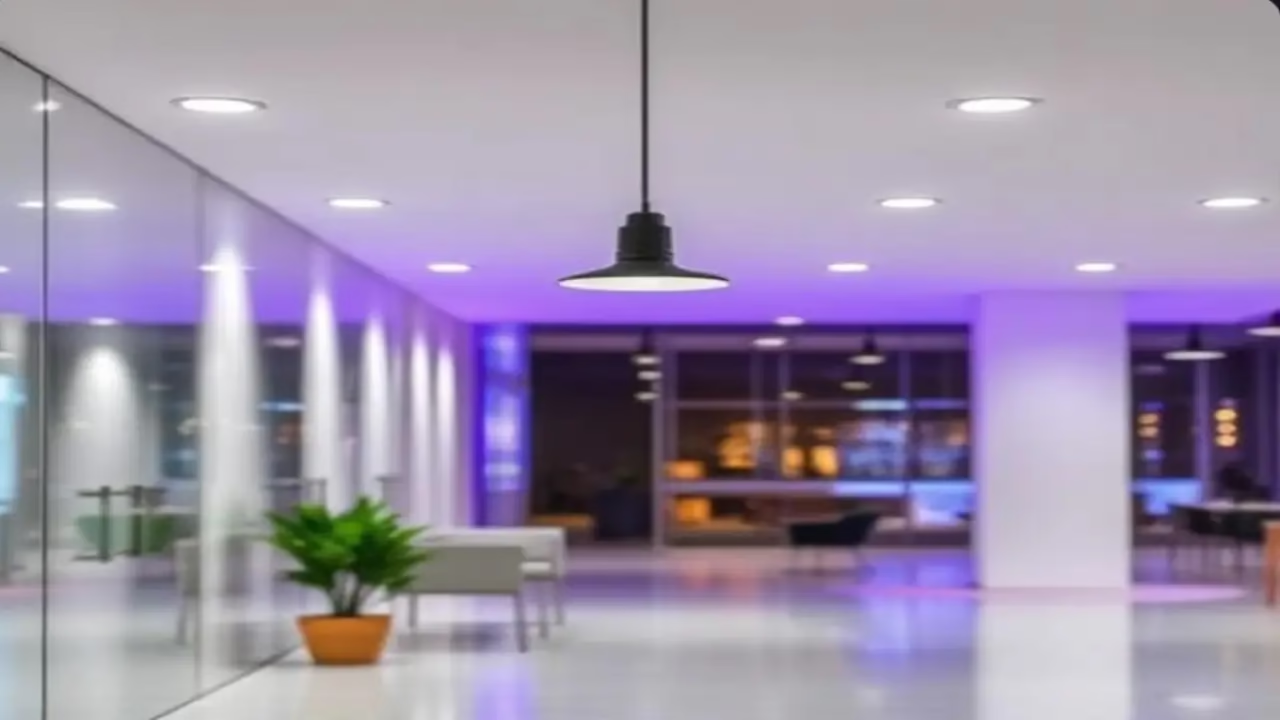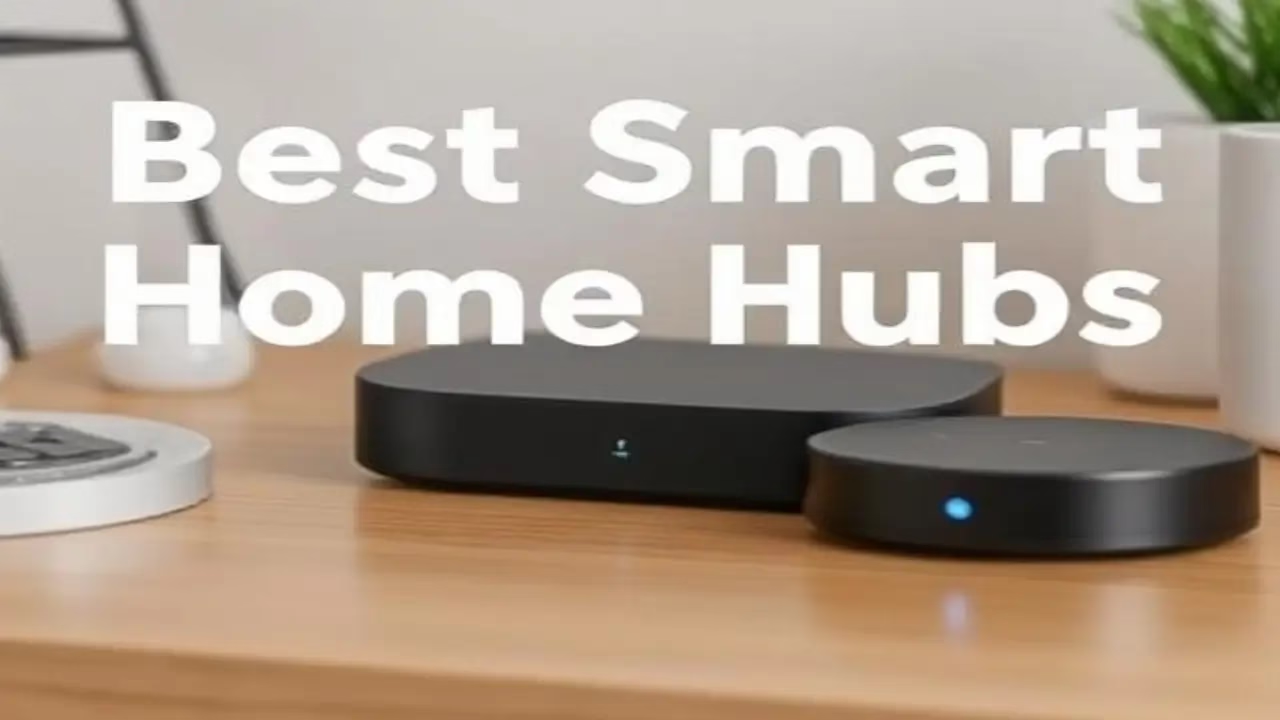IoT Lighting Solutions: Elevate Your Smart Space
Discover the Best IoT Lighting Solutions to transform your home and office. Learn benefits, applications, installation tips, and future trends in smart lighting automation.
IoT Lighting Solutions: Elevate Your Smart Space
Imagine entering a home or office where the lights adjust automatically to create the perfect ambiance, conserve energy, and boost security—all without you lifting a finger. This is the promise of iot lighting solutions. In today’s digital age, many homeowners and business operators are facing challenges like high energy costs, inefficient lighting systems, and outdated control methods. They often wonder: How can I upgrade my space with smart, automated lighting that makes everyday life easier? This guide provides clear, step-by-step insights into the Best IoT Lighting Solutions. You’ll learn how these systems work, their benefits, and how to implement them in your home or office. Whether you’re a student exploring new technology or a professional looking to solve real-world problems, read on for an informative, jargon-free overview of IoT lighting solutions.
1. What Are IoT Lighting Solutions?
IoT lighting solutions refer to smart lighting systems that are connected to the internet, enabling remote control, automation, and integration with other smart devices. These systems typically use LED bulbs, sensors, and controllers to adjust brightness, color, and operation based on real-time conditions.

Key Components:
- LED Bulbs: Energy-efficient light sources that can change brightness and color.
- Smart Controllers: Devices or apps that let you manage the lights remotely.
- Sensors: Detect motion, ambient light, or occupancy to automate lighting.
- Connectivity: Often using Wi-Fi, Bluetooth, or Zigbee to connect to the network.
These solutions are designed to make lighting more efficient and convenient, offering benefits such as energy savings, enhanced security, and improved comfort. For more detailed technical insights, visit the U.S. Department of Energy for related energy-saving statistics.
2. Benefits of IoT Lighting Solutions
The adoption of iot lighting solutions comes with several benefits that can directly address common issues in facility and home management.
Energy Efficiency and Cost Savings
- Lower Energy Bills: Smart sensors and dimming capabilities reduce unnecessary power consumption.
- Extended Lifespan: LED technology lasts longer than traditional bulbs, reducing replacement costs.
- Optimized Usage: Automated schedules ensure lights are on only when needed.
Enhanced Comfort and Ambiance
- Mood Setting: Adjust the brightness and color to create the perfect atmosphere for any occasion.
- Personalization: Customize lighting settings for different rooms and activities.
Improved Security and Safety
- Remote Monitoring: Control and monitor lights from anywhere using a smartphone app.
- Motion Detection: Automatic lighting can deter intruders by simulating occupancy.
- Emergency Alerts: Integrated sensors can trigger alerts during unusual activities.
Convenience and Control
- Voice Activation: Many systems integrate with voice assistants like Alexa or Google Assistant.
- Remote Access: Control your lighting remotely, even when you’re away from home.
- Automation: Create routines and schedules that adapt to your lifestyle.
These advantages make iot lighting solutions a smart investment for anyone looking to modernize their space while saving money and energy.
3. How Do IoT Lighting Solutions Work?
Understanding the working principles behind iot lighting solutions can help you see how they fit into your daily life.
The Operational Flow
- Data Collection: Sensors detect ambient light, movement, and occupancy.
- Data Processing: Smart controllers receive sensor data and analyze it.
- Automated Response: Based on preset rules, the system adjusts lighting—dimming, brightening, or turning lights on/off.
- User Interaction: Users can override automation via smartphone apps or voice commands.
Connectivity and Integration
These systems connect via home networks (Wi-Fi, Bluetooth, or Zigbee) to allow seamless communication between components. This connectivity enables integration with other smart home devices, creating a unified ecosystem that enhances overall home automation.
Real-Time Adaptability
Smart lighting systems continuously learn from your behavior. For instance, if you consistently dim the lights at a certain time, the system may automatically adjust for you in the future.
For further details on how connected devices communicate, check out this descriptive article on IoT connectivity from IBM.
4. Key Technologies Behind IoT Lighting Solutions
Several core technologies make iot lighting solutions both powerful and user-friendly.
LED Technology
LED bulbs are the heart of smart lighting. They consume less energy, produce less heat, and offer a wide range of color and brightness options compared to traditional incandescent bulbs.
Wireless Communication
Smart lighting relies on wireless protocols like:
- Wi-Fi: Offers broad coverage and high data rates.
- Bluetooth: Suitable for short-range, low-energy applications.
- Zigbee: Ideal for building networks of devices with low power consumption.
Sensors and Actuators
- Motion Sensors: Detect movement to trigger lights.
- Ambient Light Sensors: Adjust brightness based on natural light levels.
- Occupancy Sensors: Ensure lights are only on when people are present.
Cloud Computing and Data Analytics
Data from lighting systems can be sent to cloud servers for analysis. This helps in refining automation algorithms, predicting maintenance needs, and providing insights into energy usage.
For an in-depth look at these technologies, see the MIT Technology Review for the latest innovations in IoT.
5. Applications of IoT Lighting Solutions
iot lighting solutions are versatile and can be applied in various settings. Below are some common applications:
Residential Applications
- Home Automation: Customize lighting for living rooms, bedrooms, kitchens, and outdoor areas.
- Mood Setting: Use color-changing LEDs to create different ambiances for relaxation, work, or entertainment.
- Energy Management: Automatically dim lights during daytime to save energy.
Commercial Applications
- Office Buildings: Implement smart lighting to reduce energy consumption and improve employee productivity.
- Retail Stores: Enhance customer experience with dynamic lighting that changes based on time of day or promotions.
- Hotels: Create customizable room lighting to improve guest comfort and satisfaction.
Industrial and Public Spaces
- Warehouses: Use motion sensors to light up areas only when in use, improving safety and reducing costs.
- Streets and Parking Lots: Implement smart street lighting that adjusts based on traffic and ambient light.
- Educational Institutions: Enhance classroom environments with adaptive lighting that supports different learning activities.
Below is a sample table comparing typical applications across different environments:
Table source: Adapted from industry reports on smart home technologies.
6. Installation and Setup of IoT Lighting Solutions
Implementing iot lighting solutions is often simpler than it sounds, and many systems are designed for DIY installation.
Step-by-Step Installation Guide
- Plan Your Layout: Identify areas where smart lighting is most needed.
- Replace Existing Bulbs: Swap out traditional bulbs with smart LED bulbs.
- Install Smart Controllers: Connect controllers to your home Wi-Fi network.
- Place Sensors Strategically: Install motion and ambient light sensors in key areas.
- Download the App: Use the manufacturer’s app to configure settings and schedules.
- Test and Optimize: Run a system test to ensure everything works as expected and make adjustments as needed.
DIY vs. Professional Installation
- DIY Installation: Many smart lighting systems are designed for easy setup, with clear instructions and user-friendly apps.
- Professional Installation: For larger or more complex systems, hiring a professional can ensure optimal performance.
For additional installation tips and smart home automation ideas, visit Aixplore Tech for expert guidance.
7. Energy Efficiency and Environmental Impact
One of the main reasons homeowners and businesses choose iot lighting solutions is for the significant energy savings and environmental benefits they offer.
Energy Consumption Reduction
- Lower Power Usage: LED bulbs use up to 80% less energy than incandescent bulbs.
- Smart Dimming: Automatically adjusting brightness based on ambient light leads to further savings.
- Scheduled Operation: Lights turn off automatically when not in use.
Environmental Benefits
- Reduced Carbon Footprint: Lower energy usage means fewer greenhouse gas emissions.
- Longer Lifespan: LEDs last longer, reducing waste and the need for frequent replacements.
- Sustainable Technology: Smart lighting supports sustainable living by optimizing energy consumption.
A report by the U.S. Department of Energy highlights that energy-efficient lighting can reduce electricity consumption significantly, contributing to both cost savings and environmental protection.
8. Challenges and Considerations in Adopting IoT Lighting Solutions
While iot lighting solutions offer many benefits, there are some challenges to consider before installation.
Common Challenges
- Initial Investment: The upfront cost can be high compared to traditional lighting.
- Integration Issues: Existing wiring and infrastructure may require upgrades.
- Data Security: As with all IoT devices, there is a risk of cyber threats if not properly secured.
- User Learning Curve: Some users may need time to adjust to controlling lighting via apps or voice commands.
Mitigation Strategies
- Cost-Benefit Analysis: Calculate long-term savings to justify the initial expense.
- Professional Assessment: Hire professionals to evaluate and integrate new systems with existing infrastructure.
- Robust Security Measures: Ensure devices are updated regularly and use strong encryption.
- User Training: Offer simple tutorials and support to help users adapt.
For a deeper dive into overcoming these challenges, check out insights from Harvard Business Review on implementing smart technologies successfully.
9. Future Trends in IoT Lighting Solutions
The field of iot lighting solutions is continuously evolving. Here are some trends that are likely to shape the future:
Greater AI Integration
- Adaptive Learning: AI can learn user preferences over time and adjust lighting automatically.
- Predictive Maintenance: AI algorithms can predict when bulbs or sensors need replacing.
Enhanced Connectivity
- IoT Ecosystems: Future systems will integrate more seamlessly with other smart devices (e.g., thermostats, security systems) for a unified home automation experience.
- 5G Networks: Faster and more reliable connectivity will improve real-time control and data processing.
Advanced Customization
- Personalized Lighting Scenes: Users will be able to create highly personalized lighting scenes that change based on time, mood, or activity.
- Interactive Environments: Integration with augmented reality (AR) could allow users to visualize and control lighting in immersive ways.
Sustainability and Eco-Friendliness
- Energy Harvesting: Future devices might incorporate energy-harvesting technologies to further reduce power consumption.
- Smart Cities: IoT lighting solutions will play a key role in smart city initiatives, improving public safety and reducing urban energy use.
For the latest information on emerging trends in IoT, visit MIT Technology Review for cutting-edge research and forecasts.
10. Case Studies and Success Stories
Residential Transformation: A Smart Home Upgrade
A family in the United States recently upgraded their entire home with iot lighting solutions. By replacing traditional bulbs with smart LEDs and installing motion and ambient light sensors, they achieved:
- 30% Reduction in Energy Bills: Automated adjustments reduced unnecessary power consumption.
- Enhanced Home Security: Outdoor sensors provided automatic lighting at dusk, deterring intruders.
- Improved Comfort: Customized lighting scenes made their living spaces more inviting and functional.
Commercial Efficiency: Modernizing an Office Building
An office building implemented a centralized smart lighting system to control lighting across multiple floors. The system resulted in:
- 15% Energy Savings: Scheduled lighting and sensor-based adjustments cut down on waste.
- Increased Employee Productivity: Well-lit, adaptable workspaces improved overall satisfaction.
- Streamlined Maintenance: Automated alerts for bulb replacements minimized downtime.
Industrial Application: Smart Lighting in Warehouses
A large warehouse integrated iot lighting solutions to manage vast storage areas. Benefits included:
- Optimized Lighting: Lights activated only when employees were present.
- Improved Safety: Immediate alerts in case of power failures or anomalies.
- Cost Savings: Reduced energy consumption contributed to lower operating expenses.
For more detailed success stories and insights, check out Consumer Reports for independent reviews and case studies.
11. Frequently Asked Questions (FAQ)
Q1: What are IoT Lighting Solutions?
A: IoT lighting solutions are smart lighting systems connected to the internet that allow remote control, automation, and integration with other smart home devices. They typically use LED technology, sensors, and controllers.
Q2: How do IoT Lighting Solutions save energy?
A: They use sensors and automation to adjust brightness and turn lights on or off based on occupancy and ambient light, which reduces unnecessary energy consumption.
Q3: Can I install IoT Lighting Solutions myself?
A: Many systems are designed for easy DIY installation with clear instructions, though professional installation might be beneficial for larger or more complex setups.
Q4: How do these solutions improve home security?
A: Automated lighting can simulate occupancy when you’re away, and motion sensors can trigger lights if unexpected movement is detected, thereby enhancing security.
Q5: What are the future trends in IoT Lighting Solutions?
A: Future trends include greater integration with AI for personalized control, enhanced connectivity through 5G and IoT ecosystems, and advanced customization features that create immersive lighting environments.
Q6: Where can I learn more about IoT and smart home automation?
A: For more information, visit high-authority sources like MIT Technology Review and Aixplore Tech for expert insights and guides.
12. Conclusion and Call to Action
The evolution of iot lighting solutions is reshaping the way we illuminate our homes and workspaces. By integrating smart, connected lighting systems, you can enjoy significant energy savings, enhanced security, and a more comfortable environment—all while contributing to sustainability efforts. Whether you’re a homeowner, business operator, or student exploring smart technology, the benefits of upgrading to IoT lighting are clear.
As you consider transforming your space, remember to assess your needs, compare available products, and take advantage of the latest technologies. Embrace the future of lighting and experience the convenience and efficiency that comes with smart automation.
Call to Action:
Ready to transform your home or office with IoT lighting solutions? Explore our detailed guides and expert tips on smart home automation by visiting Aixplore Tech. Subscribe to our newsletter for the latest updates, share your success stories in the comments, and join the growing community of innovators who are lighting the way to a smarter future!
This comprehensive guide on iot lighting solutions has provided clear, actionable insights into how smart lighting can revolutionize your space. By understanding the benefits, technology, and practical implementation steps, you can confidently upgrade your home or office to a more efficient, secure, and enjoyable environment. Whether you’re tackling high energy bills or looking to modernize your workspace, smart lighting is the key to a brighter, smarter future.


